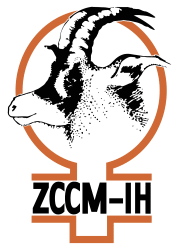ABOUT 50 Households are expected to be displaced to pave way for the construction of a US$600 million dollar Cement factory in Masaiti District on the Copperbelt Province.
ZCCM Investment Holding (IH) Cement Stirring Committee Chairperson.
Mwila Lumbwe said ZCCM-IH is partnering with Central African Cement Limited which is spearheading the development of the project in Masaiti.
In July last year, President Edgar Lungu graced the ground breaking ceremony of the $600 million cement project.
Mr Lumbwe said the project that would take 36 months to complete, would create a thousand jobs in various fields during construction phase and after completion, 400 permanent jobs would be created.
“It is our hope that the people in Chief Chiwala’s area will benefit from the new opportunities that will be created by Central African Cement,” he said.
Mr Lumbwe said the 47 households that would be displaced were in the factory area adding that others that farmed in the same area, would also be compensated, and the value minimum for construction for each house hold would be K108, 000.
He also said the project was said to revive Ndola Lime with the intention of having Ndola Lime supply Lime stone which was the basic product which would help in Cement production.
Mr Lumbwe said it would significantly enhance the capacity of Ndola Lime Company.
He said the Cement factory was one of a few real value added industries in the country because a lot of other products were imported.
Mr Lumbwe said it would enhance value chain in terms of procurement because lime stone would be procured from Ndola Lime while gemstone procured from a gemstone supplier in Mpika which would locally enhance business climate on the Copperbelt.
He said essentially the plant would generate 57 mega watts of power which would be significant for the Zambian economy.
Mr Lumbwe said the plant would use 20 mega watts leaving a surplus of 38 mega watts which would be released into the grid and possibly exported, adding that the plant would bring opportunities for the Zambian economy at large.
Copperbelt Permanent Secretary Bright Nundwe said the factory would sit 75 hectares adding that no one would be affected in terms of displacement and decent houses would be built for them before relocation.
“This is a very good project, but the moment someone starts mourning it will be bad so there must be proper issues of significant planning.
Before a machine lands on any piece of land, ensure that the people displaced have where to go. Make sure the people are excited and not mistreated,” he said.
Mr Nundwe further added that the project should be well sustained and in order because Copperbelt was the heartbeat of Zambia.
Source: Times of Zambia


